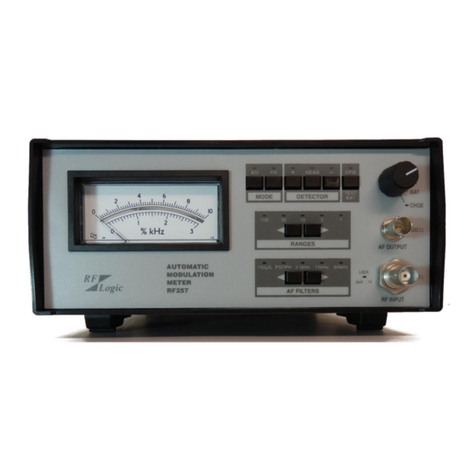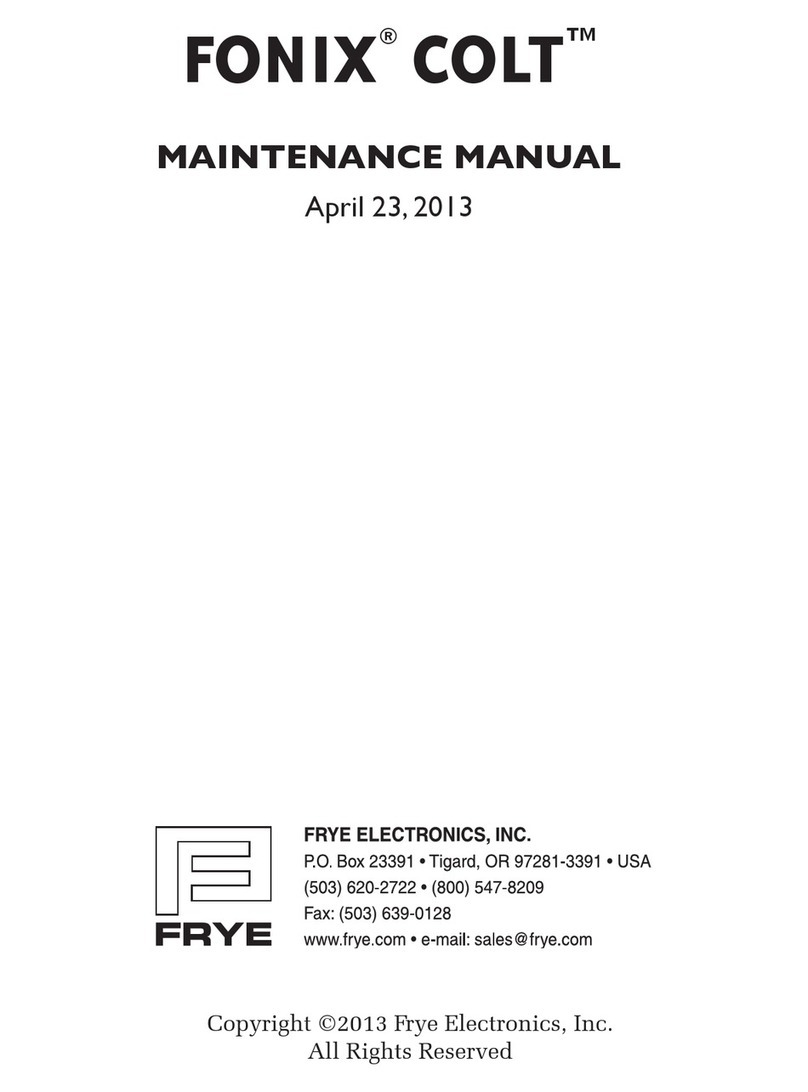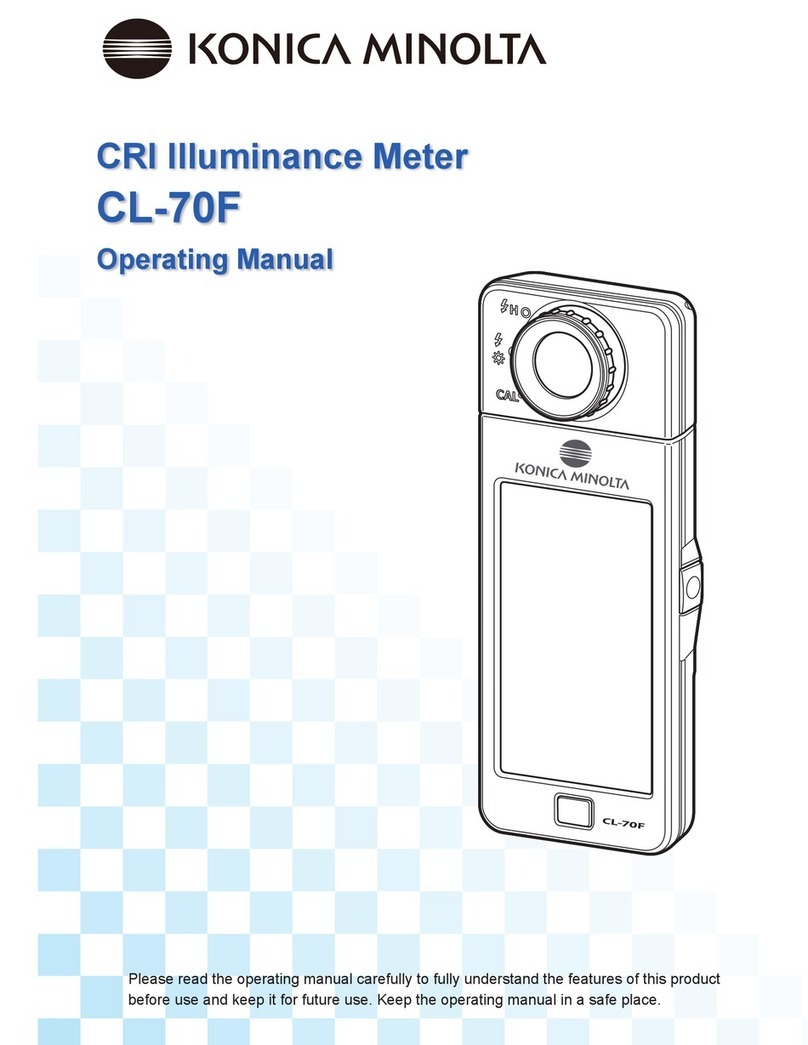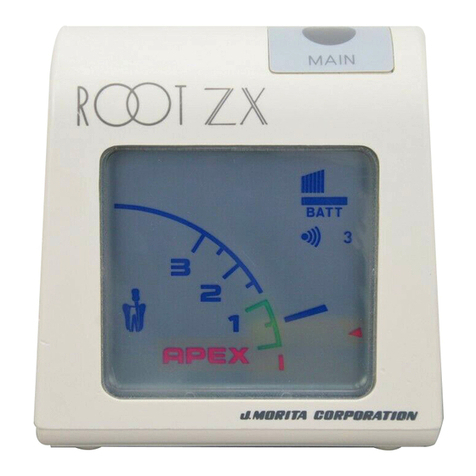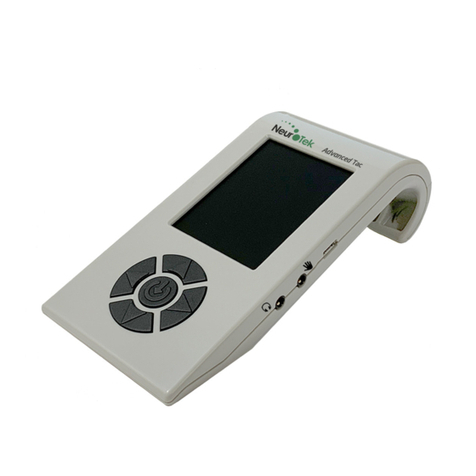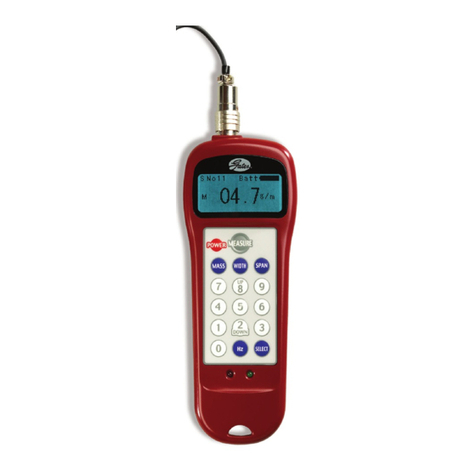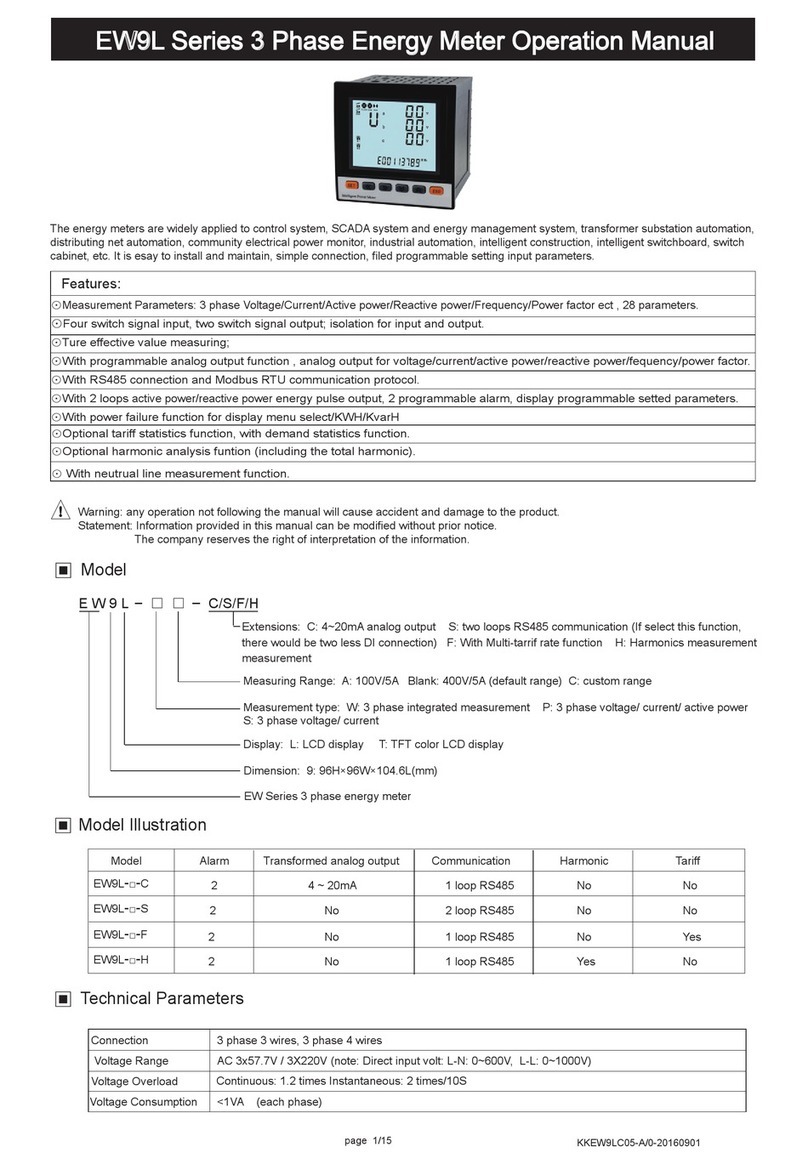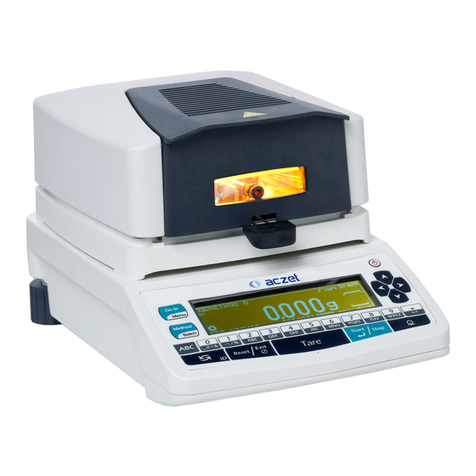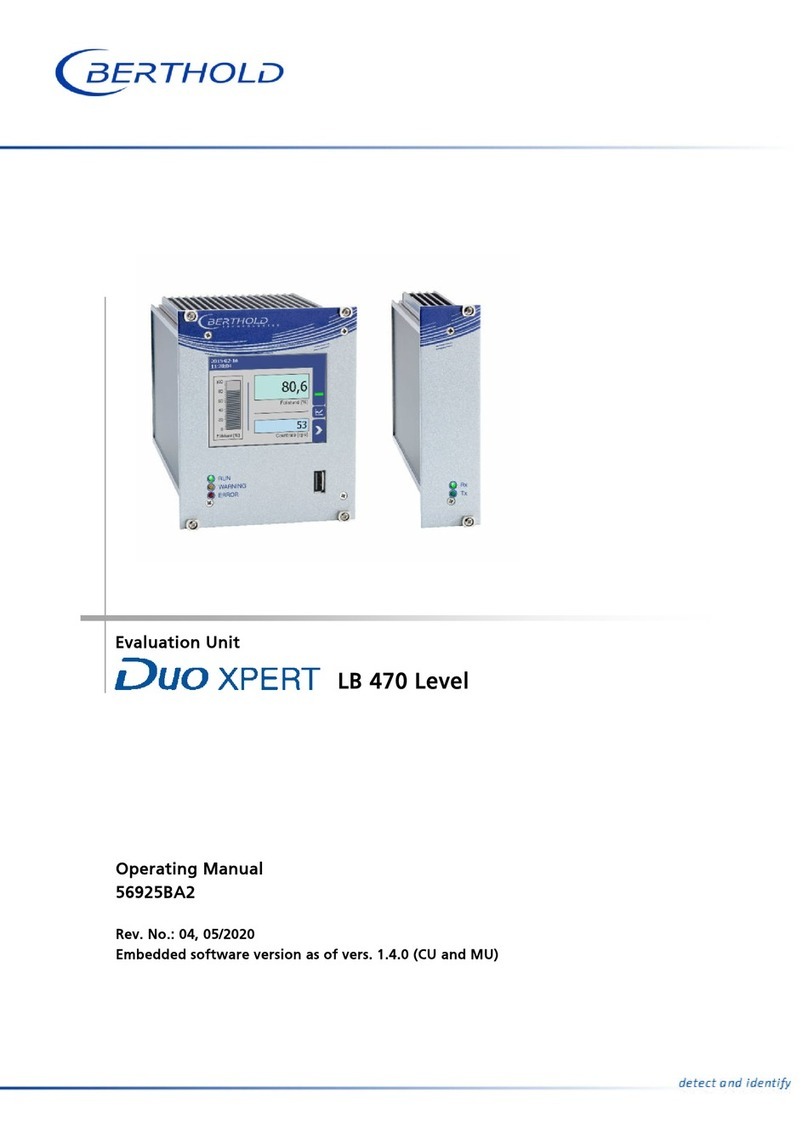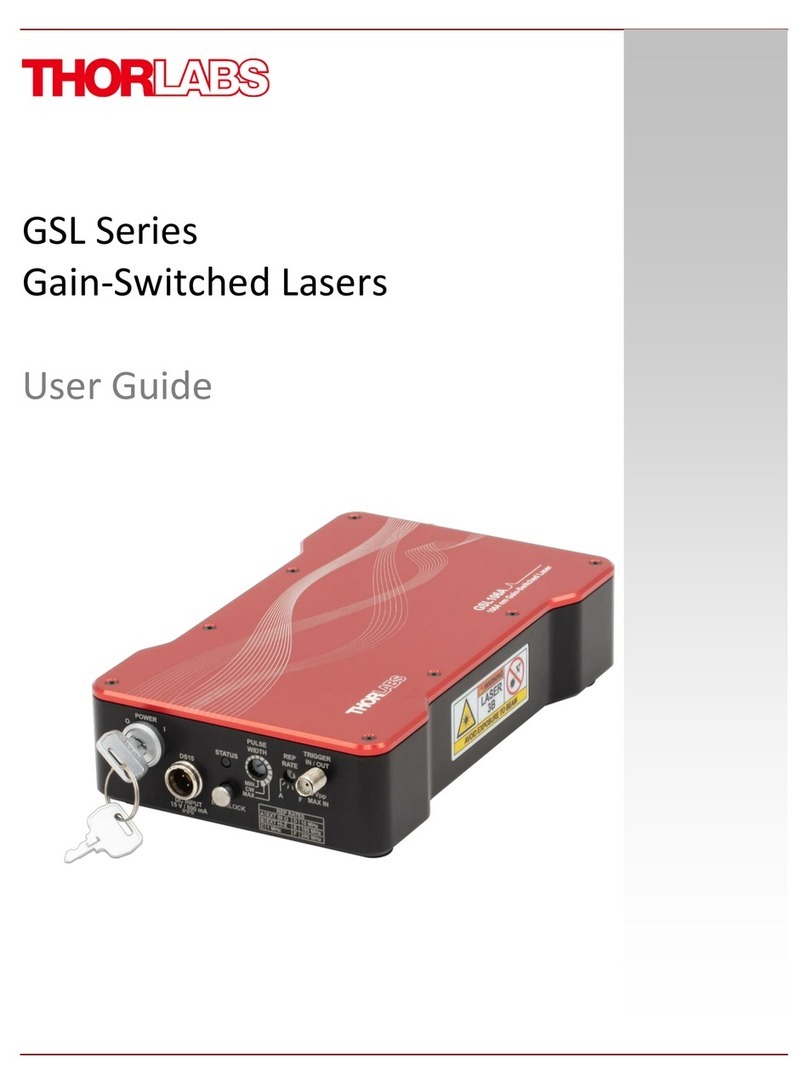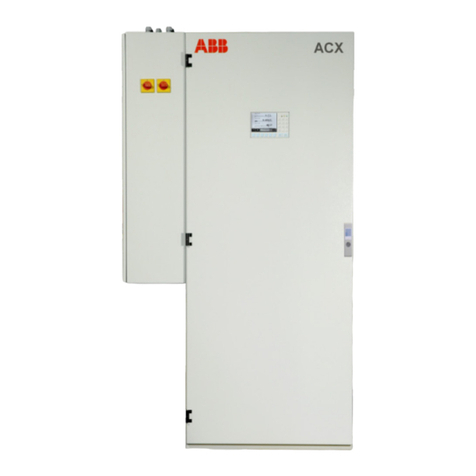RF Logic RF257 User manual

RF Logic Limited.
Unit 18, The Enterprise Centre,
Coxbridge Business Park, FARNHAM,
Surrey GU10 5EH
Tel +44 (0)1252 268340
web: www.rflogic.co.uk
Electronic Product Design
Automatic Modulation Meter
Model RF257
Operator Manual
Model RF257 Automatic Modulation Meter
The model RF257 modulation meter has been designed to simplify the task of modulation
measurement. The model RF257 always locks to the highest level signal available, ignoring spurious
signals and harmonics. AM and FM measurements can be made over the full frequency range of 1.5MHz
to 2.0GHz. The unit operates usefully with reduced sensitivity to at least 4GHz.
FM measurement of peak positive, peak negative or mean deviation, with 5 deviation ranges from 1kHz
to 100kHz full scale. AM measurement of peak, trough or mean in percentage modulation with 5 ranges
from 1% to 100% full scale. The audio measurement bandwidth is selectable and the demodulated audio
is available at the front panel. The IF is available on a BNC connector on the rear panel.
The unit is small and lightweight, making it ideal for the bench or field work, especially with the internal
battery option installed.

Operating Instructions
Power Requirements.
AC MAINS OPERATION
WARNING
INCORRECT SUPPLY RANGE SELECTION COULD
CAUSE SERIOUS DAMAGE TO THE INSTRUMENT
Two AC power ranges are available, 102V - 130V and 205V - 260V. Make sure any mains
connection is removed from the unit. Remove the four bottom case screws and remove
cover. Select the appropriate range on the mains selector switch. This is located adjacent to
the mains transformer on the bottom PCB inside the instrument and is identified as W1.
Replace bottom cove and screws.
Connect the power lead to the local AC supply socket. The instrument is switched on by
switching the front panel rotary switch to 'ON'. The instrument is immediately ready for
use; no warm-up time is required. At power on, the RF257 defaults to the FM 100kHz range
with the mean detector and the 3.5kHz filter selected.
Input Signal.
Connect the signal source to the 'INPUT' socket, the 'LOCK' LED should immediately
illuminate if the signal is within the range 2mV to 1V. The 'LOCK' LED shows that the
instrument is correctly tuned to the incoming signal. The measuring circuits are inhibited
when the 'LOCK' indicator is not lit. DO NOT APPLY MORE THAN 1V (2.8V p-p), the input
circuitry will be damaged.
The instrument locks to the highest level signal applied to the input. It will not lock to a
harmonic or other spurious signal provided that the intended carrier has the highest level
signal and that it is within the specified frequency range. The tuning mechanism provides a
continuous dynamic frequency lock that permits accurate modulation measurements to be
taken even on a slowly sweeping carrier.
In general, the instrument provides good selectivity against interference from spurious
signals. However, the broadband nature of the input circuit implies that the possibility of
such interference cannot be completely eliminated. If it is suspected that a reading is being
affected by high level interfering signals, make a check by disconnecting and reconnecting
the signal source several times; any change in the modulation reading implies interference.
Normal harmonic levels, even in the worst case, are unlikely to have any effect on
measurements.

FM Measurement.
Select the FM mode with the 'MODE FM' pushbutton.
Select the appropriate 'RANGE' with the < > pushbuttons. Five ranges are available with full
scale deviations of 1, 3, 10, 30 and 100kHz.
Select the required 'AF FILTER' with the < > pushbuttons. Five filter functions are available;
three bandpass filters with nominal upper cut-off frequencies of 60kHz, 15kHz and 3.5kHz;
a psophometric filter complying to the CCITT standard and a 750 µs de-emphasis network.
Select the required 'DETECTOR' mode with the '+', 'MEAN' and '-' pushbuttons. '+' gives
peak positive deviation, '-' gives peak negative deviation and 'MEAN' gives the average of
peak positive and peak negative deviations.
AM Measurement.
Select the AM mode with the 'MODE AM pushbutton.
Select the appropriate 'RANGE' with the < > pushbuttons. Five ranges are available with full
scale modulation percentages of 1%, 3%, 10%, 30% and 100.0%. The demodulator is highly
linear and allows accurate AM readings up to 100%.
Select the required 'AF FILTER' with the < > pushbuttons. Five filter functions are available;
three bandpass filters with nominal upper cut-off frequencies of 60kHz, 15kHz and 3.5kHz;
a psophometric filter complying to the CCITT standard and a 750 µs de-emphasis network.
Select the required 'DETECTOR' with the '+', 'MEAN' or '-' pushbuttons. '+' gives peak
percentage modulation, '-' gives trough percentage modulation and 'MEAN' gives the
average between the peak and trough modulation.
Internal Battery Operation (Option 03).
To operate from the internal battery, switch the front panel rotary switch to 'Bat'. This will
give at least 8 hours of continuous use from a fully charged battery. The battery state
during mains or battery operation can be determined by pressing the 'Bat Chk' pushbutton.
A reading between 8 and 10 on the scale is required for normal operation. To charge the
battery, switch the front panel rotary switch to 'Chge'. Allow 14 hours for a complete
charge. A yellow LED shows that the battery is on charge. During normal mains operation
the battery is trickle charged.
Demodulated Audio Output.
The demodulated audio output is available on the front panel via a BNC connector. This is a
600 Ω output impedance with a level of 0dBm for FSD.
IF Output.
The IF output is available on the rear panel via a BNC connector. This approximately 420kHz
at a level of 100mV with a nominal 50 Ωoutput impedance.

RF257 SPECIFICATION
RF Input
Frequency Range 1.5MHz to 2.0GHz and a useful response, with reduced sensitivity, to
at least 4GHz.
Impedance 50 Ω nominal.
Level 2mV to 1V rms Full specification for noise, accuracy etc applies over
the input range 10mV to 1.0V
Max Input 0.5W continuous.
Tuning Automatic tuning selects the largest available signal. Correct
operation requires spurious signals to be >10dB below the wanted
signal.
Acquisition Typically < 100ms. Settling time for the AF circuits is additional and is
typically 1s for a reading > 75% of meter range.
L.O Feedout -60dBm typically.
FM Measurement
FSD Ranges Five ranges with full scale deviations of
1kHz, 3kHz, 10kHz,30kHz and 100kHz.
Modes Peak Positive, Peak Negative and Mean deviation.
Accuracy ± 2% of Full scale ± 1% of reading with a 1kHz tone. See audio filter
specification for additional error due to AF response. Residual FM is
additional.
Residual FM <20Hz at 100MHz
<100Hz at 500MHz
<200Hz at 1000MHz
Measured with 3.5kHz AF bandwidth.
Distortion <1% at 100kHz deviation with a 1kHz tone.
AM Measurement
FSD Ranges Five ranges with full scale indications of
1%, 3%, 10%, 30%, 100%.
Modes Peak, Trough and Mean of peak and trough.
Accuracy ± 2% of Full scale ± 2% of reading with a 1kHz tone.
See audio filter specification for additional error due to AF response.
Residual AM is additional.
Residual AM <0.5% ( 15kHz bandwidth selected )
Distortion <1% for 80% AM with a 1kHz tone.
Audio Filters
60kHz Filter 250Hz - 60kHz ± 0.5 dB
12Hz - 72kHz ± 3 dB typically.
HF roll off at 80 dB/decade.
15kHz Filter 250Hz - 15kHz ± 0.5 dB
12Hz - 19.5kHz ± 3 dB typically.
HF roll off at 60 dB/decade.

3.5kHz Filter 250Hz - 3.5kHz ± 0.5 dB
12Hz - 4.0kHz ± 3 dB typically.
HF roll off at 100 dB/decade.
Psophometric Complies with CCITT Volume V P53
De-emphasis 750μs de-emphasis.
3 dB bandwidth typically 12Hz - 212Hz.
HF roll off at 12dB/decade.
Front Panel
AF Output Front panel BNC.
Level 0dBm approx. for FSD.
Impedance 600 Ω nominal.
Display Type Moving coil meter with 60mm mirror scale.
Overload Fully protected against over-ranging.
Rear Panel
IF Output Rear panel BNC.
Level 100mV, 50 Ω nominal.
Frequency is approximately 420kHz.
Power Requirements
AC Line Internal selection of line voltage
115V 102V to 130V
230V 205V to 265V
Power 6VA Approx.
Frequency 48 to 60Hz.
Fuse 100mA fast blow on rear panel.
Environmental
Temperature
Operating 0°C to 55°C. Full specification over the range 5°C to 45°C.
Storage -20°C to 55°C.
Humidity Max 95% RH at 30°C.
Mechanical
Size H105, W215, D305 mm
Weight Approx. 1.7kg.
Approx. 2.6kg with battery option.
Internal Battery (Option -03)
Discharge Time >8 hours. Typically, 10 hours for a fully charged battery.
Recharge Time 14 hours.
Battery Test Pressing the Bat Chk push button displays the battery condition on
the display. A reading of between 8 and 10 is required for normal
operation.
Fuse 1A slow blow on rear panel.
Other manuals for RF257
1
Table of contents
Other RF Logic Measuring Instrument manuals
